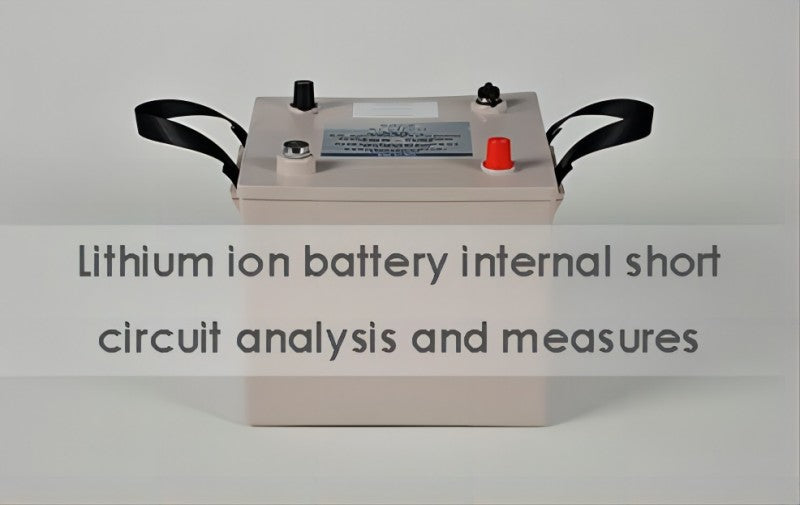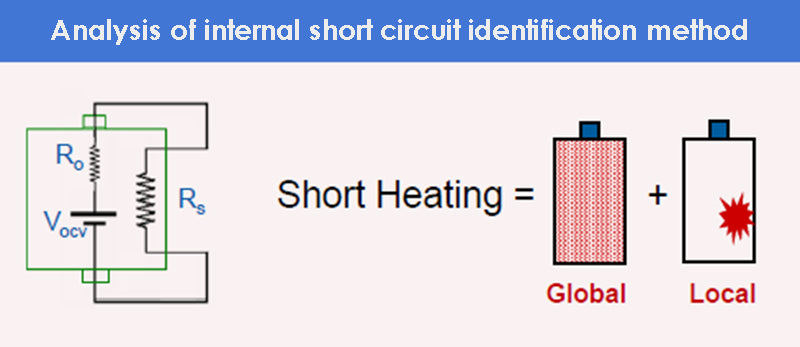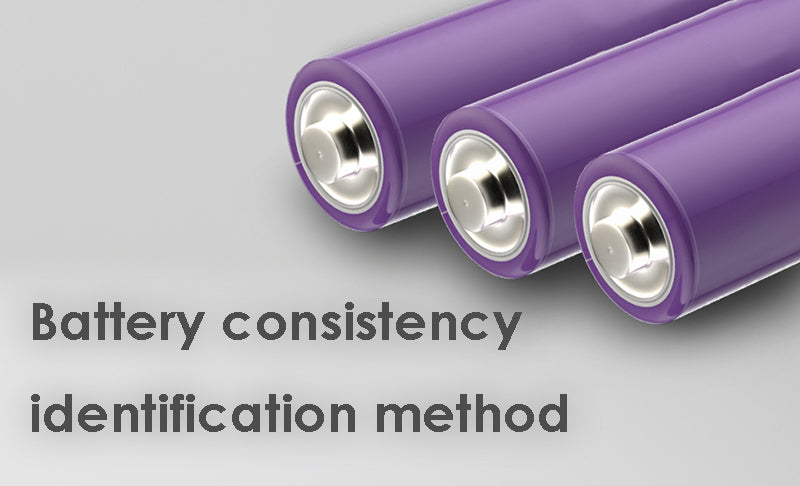
Main content:
In the complex working conditions of charging and discharging in actual work, although under the action of the battery energy management system, the lithium-ion battery can achieve normal operation as much as possible, but in special cases such as overcharging, over-discharging, and overheating, mechanical abuse and battery damage will still occur.
Abuse and thermal abuse, which will cause rapid deterioration of battery performance, and then short circuit in the battery, and finally lead to thermal runaway safety issues.
Research on the mechanism of internal short circuit
Internal short-circuit trigger conditions can be divided into three types: mechanical abuse, electrical abuse and thermal abuse. Among them, mechanical abuse is to cause mechanical deformation of the battery and partial rupture of the diaphragm through acupuncture and extrusion, triggering an internal short circuit of the battery.
Electrical abuse is to cause lithium deposition and dendrite growth in the battery, and connect the positive and negative parts of the battery through the pores of the diaphragm , causing a short circuit in the battery. Thermal abuse is high temperature that causes the diaphragm to shrink and collapse on a large scale, causing a short circuit in the battery.

When an internal short circuit occurs in a lithium-ion battery, a large current and a large amount of local heat will be generated, eventually leading to thermal runaway. The internal short circuit exists in the whole battery cycle, and its development and evolution process can be divided into the initial stage, the middle stage and the end stage.
In the initial stage of the internal short circuit, the voltage drop caused by the internal short circuit is relatively slow, and at the same time, the heat generated is less and can be dissipated by the cooling system in time, and the battery temperature does not change significantly. This stage lasts for a long time and is not easy to be found.
In the middle stage of the internal short circuit, the voltage drops significantly, and the heat generated cannot be dissipated in time, resulting in heat accumulation, and the battery temperature rises significantly. This stage lasts for a short period of time, with obvious characteristics and is easier to be identified.
In the final stage of the internal short circuit, a large area of the battery short circuit causes the battery voltage to drop to 0V, a large amount of heat is generated instantly, and the battery thermal runaway occurs. The duration of this stage is extremely short and cannot be blocked.
Analysis of internal short circuit identification method
In order to avoid unstoppable thermal runaway in the final stage of internal short-circuit development, researchers have long been committed to the research on accurate identification of short-circuit internal methods in the initial charge of lithium batteries.

The current identification methods for internal short-circuits are now summarized into the following five categories:
- Measured data deviation identification method
This method needs to establish a reliable battery state prediction model, and then compare and analyze the real-time measured values of parameters such as voltage and temperature during the charging and discharging process of the battery with the predicted values of the model. It is judged that the battery has an internal short circuit.
Since the characteristic parameters such as battery voltage and temperature do not change significantly at the initial stage of internal short circuit, this method has limited identification effect on initial internal short circuit and cannot identify internal short circuit of parallel battery pack.
- Voltage signal abnormal identification method
This method is based on the principle that abnormal voltage drop-recovery phenomena will occur when the ceramic diaphragm battery is short-circuited, and detects whether there is a voltage drop-recovery phenomenon in the battery voltage signal during the charging and discharging process of the battery.
Abnormal phenomenon, once an abnormal phenomenon is detected, it is judged that an internal short circuit has occurred in the battery. Since only the battery separator coated with porous protective material has an abnormal phenomenon of voltage drop-recovery when an internal short circuit occurs, this method can only identify the internal short circuit of a specific battery type in series battery packs, which has great limitations.
- Battery self-discharge identification method
A short circuit in the battery will inevitably cause a self-discharge process beyond the normal range. By comparing the voltage before and after standing still, benchmarking constant voltage source and other detection methods, it is detected whether there is an abnormal self-discharge process in the battery.
If there is, it is judged that the battery has an internal short circuit. Because this method requires the battery to be static and requires the battery to be in a non-working state, this method cannot perform real-time identification when the battery is working and internal short-circuit identification of the parallel battery pack.

- Battery consistency identification method
Based on the assumption of consistency between battery cells, we can monitor the voltage, capacity, remaining power and other parameters of each battery cell in the same battery pack, if there is a battery cell parameter that deviates seriously and the normal parameters of other cells destroy the overall consistency of the battery, it is judged that the battery cell has an internal short circuit.
Since the characteristic parameters such as battery voltage and capacity do not change significantly at the initial stage of internal short circuit, this method has limited identification effect on initial internal short circuit and cannot identify internal short circuit of parallel battery pack.
- Special circuit identification method
By detecting parameters such as voltage and current in the topology of a symmetrical ring circuit, if the symmetry of the circuit parameters is found to change, the location of the battery cell where the internal short circuit occurs can be accurately judged.
This method solves the high-precision identification and resistance value estimation of the internal short circuit of the battery pack in parallel, but there are problems such as high cost of detection equipment and affecting the dynamic consistency of the battery.
Internal short circuit suppression measures
The factors that cause short circuit in the battery can be generally divided into two categories: battery material and process aspects and battery design and use aspects. From the above two aspects, the methods of suppressing and preventing the occurrence of internal short circuit are summarized as follows:

Battery materials and process aspects
It is mainly carried out through the improvement of diaphragm materials and electrolyte materials, positive and negative electrode coatings, and improvement of production processes to reduce production defects. By using a ceramic separator with high temperature resistance and low self-discharge rate and a flame-retardant electrolyte or ionic liquid electrolyte, it can effectively inhibit the growth of dendrites and reduce the risk of internal short circuit.
By coating the current collector or the positive and negative electrodes of the battery cell with a low-conductivity coating or a positive temperature coefficient material, when the battery is short-circuited, it can effectively reduce the internal short-circuit current and heat generation capacity, thereby reducing the risk of thermal runaway of the battery probability.
Optimize the production process and impurity removal process of materials such as battery cells and diaphragms, effectively filter out metal impurities, prevent irreversible side reactions between metal impurities and electrolytes, and reduce the risk of internal short circuits caused by metal particles piercing the diaphragm.
In addition, the use of advanced detection technology to detect the integrity of the internal structure of the battery, the processing accuracy and the alignment of the pole pieces can also avoid the potential risk of internal short circuit.
Aspects of battery design and use
In terms of battery software design, a reasonable battery warning and battery safety control strategy is set through the BMS to realize real-time monitoring of the battery cell status, timely detect the location of the battery cell where an internal short circuit occurs, and promptly eliminate potential safety hazards. The risk of internal short circuit caused by high battery load is reduced through battery charging and discharging redundancy and equalization design.
In terms of battery hardware design, the battery fuse is subdivided into battery cell fuses, module fuses, battery pack fuses, and vehicle load fuses. Through layered management, the internal short-circuit battery cell circuit can be cut off in time.
Prevent the internal short circuit from continuing to develop. Reasonably design the internal cooling system of the battery to increase the thermal conductivity and prevent thermal runaway caused by the decomposition reaction of the positive and negative electrodes, electrolyte and diaphragm caused by overheating.
Reasonably design the internal heating system of the battery to preheat the battery to a suitable working temperature during low-temperature charging to avoid thermal runaway caused by dendrites piercing the diaphragm during low-temperature charging.
Related article: battery state of charge, marine battery charger, top 5 fast charge battery material companies in China